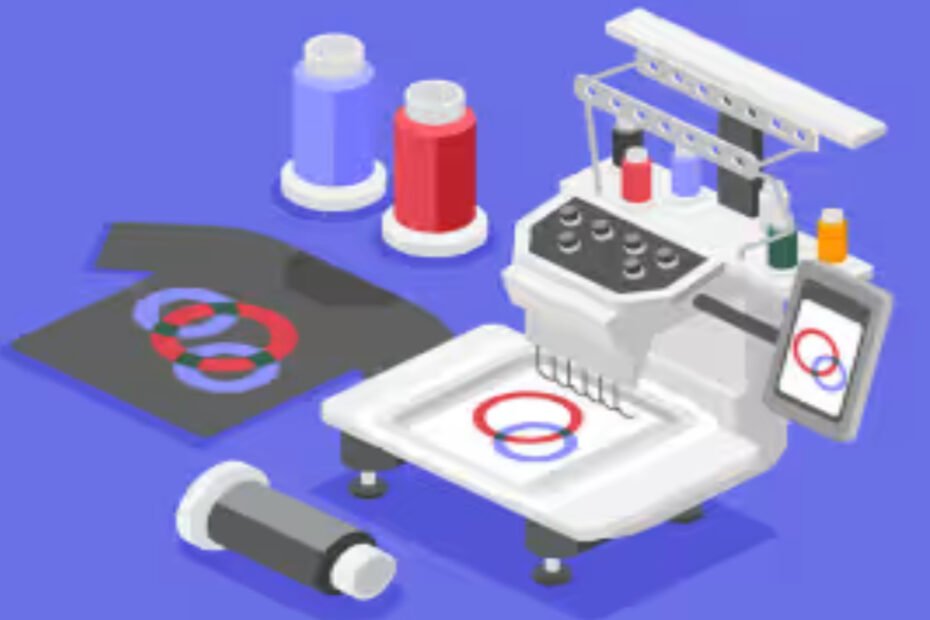Understanding what fabric sublimation is is essential for anyone who wants to start an online business selling personalized products. With this technique, you can create unique and durable prints on clothing and accessories without having to invest a lot.
In this guide, we will show you how sublimation works, what equipment you need to start production, and some sales strategies that can help your business stand out from the competition on the internet.
What is fabric sublimation?
Sublimation is a printing technique that uses heat and pressure to transfer an image printed on special paper directly onto a piece of synthetic fabric, such as polyester. In this process, the sublimation ink heats up, turns into gas, and integrates with the fibers of the material, creating a permanent print.
Unlike other forms of printing, sublimation does not form relief, does not peel over time, and preserves the characteristics of the fabric. In addition, the colors remain vivid and resistant even after several washes.
How does sublimation on fabric work?
Contrary to what many people think, fabric sublimation is not just about printing the artwork. The process involves important steps that ensure a beautiful and durable result. See:
- Design creation: The first step is to develop the artwork that will be printed. It is important to use files with good resolution and defined colors to achieve a professional result.
- Printing on sublimation paper: Next, the design must be printed using a printer specifically designed for this type of technique and special sublimation paper.
- Fabric preparation: Before you begin, pre-treat the fabric as indicated by the manufacturer to improve ink adhesion.
- Transfer with a heat press: Place the paper with the artwork on the fabric and apply heat and pressure to the press for the recommended time. The ink heats up, turns into gas, and penetrates the fabric fibers.
- Cooling and finishing: After pressing, carefully remove the paper and allow the piece to cool. The print will be fixed, ready for use or sale.
It is important to remember that sublimation only works on fabrics with synthetic fibers, such as polyester. 100% cotton fabrics, for example, do not absorb the ink in the same way, resulting in lower quality prints.
List of equipment needed for fabric sublimation
Now that you know what sublimation is and how this technique works, it’s time to learn about the basic equipment needed to produce high-quality pieces efficiently. Check it out:
- Computer or laptop: Having a high-quality computer or laptop is essential for editing and preparing the designs to be printed. In addition to the computer, you will also need to invest in design software or a platform, such as Photoshop or Canva.
- Sublimation printer: This is a specific printer for working with sublimation, capable of accurately transferring the special ink to sublimation paper.
- Sublimation ink: A special ink that has been developed to turn into gas when heated, ensuring that the print penetrates the fabric fibers.
- Sublimation paper: Special paper that receives the ink and allows the art to be transferred to the fabric during pressing.
- Heat press: A machine that applies heat and pressure in order to transfer the ink to the garment evenly.
- Suitable materials: Finally, use synthetic fibers, such as polyester, which absorb the ink and provide durable and vibrant prints.
With these items, you can produce high-quality prints and start turning sublimation into a business opportunity.
Advantages of sublimation
As you may have noticed, fabric sublimation offers several benefits that make it ideal for those who want to create customized products. Check out the main ones:
Bright, long-lasting colors
As we have emphasized several times throughout this guide, prints produced using this technique retain their color intensity even after multiple washes, without the risk of fading or peeling.
This allows you to offer a high-quality, durable product that impresses your customers, increasing the chance of retaining them.
Flat print
Unlike other printing methods, fabric sublimation keeps the surface smooth and uniform. This means that the print produced does not alter the softness and elasticity of the garment, providing comfort during use.
High degree of customization
It allows you to explore endless design possibilities, from simple patterns to complex, colorful, and detailed works of art. This gives you complete freedom to create unique pieces and meet specific requirements.
Low initial investment
Compared to other techniques, sublimation printing on fabric requires a relatively low initial investment in both equipment and consumables. With a sublimation printer, a heat press, and a few basic materials, you can start production and launch your business.
product diversity
In addition to T-shirts, caps, pillows, backpacks, bags, and all other items made of synthetic fabric can also be printed. This versatility increases sales opportunities and allows you to serve different market niches.
Tips for best results when sublimation printing on fabric
To produce prints with a professional finish, it is important to take a few precautions during the process. Below, we have compiled some practical tips that can make all the difference to the final result of your pieces:
Choose the right fabric
Sublimation is a technique that achieves the best results when applied to light-colored fabrics with synthetic fibers. Cotton fabrics or blended fabrics with a low polyester content do not absorb the dye evenly, resulting in dull prints or poor durability.
Use high-resolution images
Image quality has a direct impact on the print result. Always work with high-resolution files to ensure sharpness and detail, especially for more complex or colorful motifs.
Set up the heat press correctly
Setting the sublimation machine or heat press correctly is one of the most important steps in the manufacturing process. If you try to print at the wrong temperature or for the wrong amount of time, the print image may fade, become blotchy, or even damage the garment.
Therefore, carry out production tests and always follow the instructions provided by the manufacturer of the machine you are using.
Be organized
Last but not least, you should always keep your workplace clean and well organized, as this prevents manufacturing problems that can be caused by dirt and small deposits.
Have you learned what sublimation on fabric is and how to sell online?
Now that you know how sublimation works on fabric, what equipment is required, and what precautions ensure high-quality prints, it’s time to put that knowledge into practice.
If you sell online, you can reach customers all over Brazil, create your own brand, and build a lucrative business. Remember to invest in a good e-commerce platform, use carefully selected product photos, and promote your prints on social media to increase your visibility.

